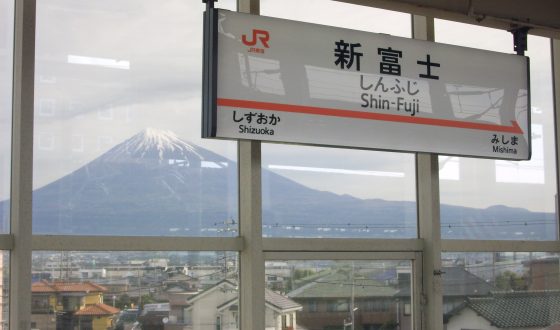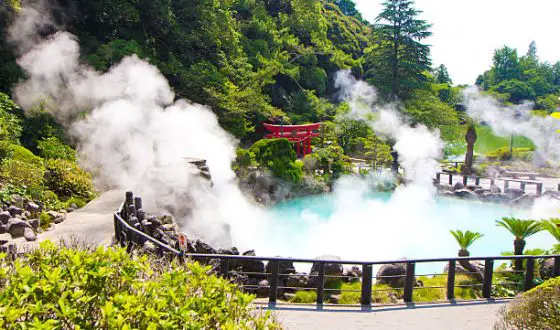Ultimate Guide On Getting Around In Tokyo
Tokyo, where ancient and modern meet, is not only the capital of Japan but also one of the top 3 global cities along with London and New York. Being the most populous city in the world and the largest cities in Japan, Tokyo boasts an extremely extensive public transportation system. So just like the title of the movie “Lost in Tokyo” starring Scarlett Johansson and Bill Murray, you might actually get lost in this vibrant city if you do not study carefully about its transportation network beforehand. To help you solve this problem, we will provide you the ultimate guide on getting around in Tokyo. Let’s check this location guide out!
Ultimate guide on getting around in Tokyo
1. Transportation choices for getting around in Tokyo
There are many transportation choices in Japan, including public transportation and private transportation. If you have a low budget, buses and subway are the most suitable choices. However, if you have a business trip to Tokyo for just a few days and do not travel much, we recommend you pick a taxi. Now, let’s take a quick look at each transportation method below.
1.1. Taxi
1.1.1. How to call/hail a taxi:
You can wait at a taxi stand to hail a taxi or simply waving your hands on the street to get the taxi driver’s attention. Pay attention to the signs that are displayed in the front window. They will tell you which one is taken and which one is available.
- RED – available for hire
- GREEN – occupied
- ORANGE – not in service

Read more:
You can also call a taxi by phone or book online via website and app. These options seem to be more useful for foreigners as normally translation and estimated fees are provided. You can check some taxi services, websites, and apps as below:
- Tokyo Taxi
- Tokyo MK Taxi
- Japan Taxi
- LINE Taxi
1.1.2. Boarding a taxi and payment method
For most taxis in Tokyo, the taxi driver will open and close the door for you to enter the back seat. So just simply wait, you do not need to do anything. If you want to sit next to the driver, just manually open the door by yourself. However, in Japan, it is preferred that you sit in the back seat.
Available payment method by cash, prepaid services, credit card or IC card (We will give you a walkthrough some IC cards later). Obviously cash is still the safest payment method since not every taxi accepts credit card or IC card. Unlike in other countries, it is not necessary and not encouraged to tip taxi drivers in Japan.

Because public transportation in Tokyo is so well developed and reasonably priced, not many people use taxis here. Moreover, getting around in Tokyo by taxis is very costly and many foreigners find difficulties in communication with taxi drivers. Normally they do not speak English so you should write down your destination address for them, especially if that place is not popular, such as hotels, restaurants, cafés…
However, if you have a sufficient budget, consider using taxi. You can choose to visit anywhere you like very quickly and do not need to carry heavy luggage wandering around Tokyo. For first-time visitors to Tokyo, the elderly and visitor groups, taxi is highly recommended. In addition, if you want to explore a lavish night in Tokyo when all other public transportations stop operating, taxi is the only option.

1.2. Buses
Getting around in Tokyo by bus can be fun too. Many buses in Tokyo are part of Toei transport network. You can check more details about the route and fare on Kotsu.metro.tokyo.
Below is a basic guide for you to take a bus:
- Find a bus stop and remember to wait in line here
- Check the destination displayed at the front of the bus
- Board the bus through back door (入口)
- Take the ticket from a machine next to the door. Remember to keep the ticket until you leave the bus as it will determine the fee you must pay. If you use IC cards, press it on the card reader
- When your stop is announced, press the disembark button and move to the front door ((出口)
- You can pay by cash or IC cards. You will put the ticket and an exact amount of coins in the fare box. If you pay by card, there is no need to worry about the this. Just press your card again on the machine and it will automatically charge you.
- When you leave the bus, you should say thank you – “Arigatou Gozamasu” to the bus driver.

For local people, traveling by bus might be more convenient than traveling by train. However, if you come to Japan for the first time or if you are not familiar with the bus system here, we recommend you not to use this means of transportation. It is because many buses only have a route map and destination announcements in Japanese.
1.3. Rent private cars
Even for local people, many of them do not like to drive in Tokyo because the road network and the traffic rules here are very confusing. Therefore, there is no question that people who are new to Tokyo should not try to use this method of transportation. However, rental cars can be extremely useful when you are familiar with the Tokyo road system and want to travel to natural spots in Tokyo, such as Akigawa Valley, Mount Takao,… Moreover, if you are traveling in a group, renting a private car and sharing the bill is a great way to save your money. You just need to avoid long holidays like Golden Week (late April to early May), Obon (mid-August) and New Year. Traffic jams often happen during these times of the year.
1.3.1. Condition to rent a car:
In order to rent a car in Japan, you need to be over 18 years old. You can bring your valid driver’s license and passport to the car rental shop. There are three types of driver’s licenses that are accepted:
- Driver’s license issued in Japan (For Japanese residents
- International driver’s license
- Driver’s license and its translation into Japanese (driver’s license for Switzerland, Germany, France, Taiwan, Belgium, Slovania, Monaco)


1.3.2. Where to rent a car:
You can book it via the internet or at the store counter. Let’s check at these websites: nrgroup, nissan-rentacar, rent.toyota.
Some information to be provided as following: Rental date, return date, Car type, Rental locations, and return locations, Other services such as journey guides, ETC, …
One thing to note is that you must return the car with a full tank of oil.

1.4. Trains and Subway
1.4.1. Subway
Getting around Tokyo subway is definitely an interesting and pleasant experience as long as you understand Tokyo’s subway network. There are two subway operators in Tokyo which are Tokyo Metro, operating 9 lines, and Toei Subway, operating 4 lines. It might be confusing at first, but do not worry. You can get the subway map in English at the hotel counter or at the train platforms. The subway stations will be marked with a symbol including the station name written in English and each line is represented by a certain letter and color.

Subway network in Tokyo is very dense and complicated
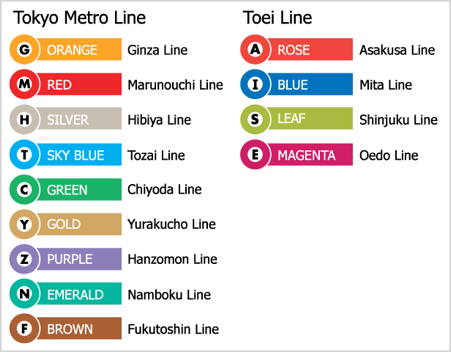
Every line has it owns color code and name
Many foreigners may freak out to see many different subway networks. However, you do not need to worry too much. Most lines of the two systems are integrated and with the use of prepaid cards, transferring from one train to another one is very smooth and easy. Of course, you can still buy a ticket but it is time-limited and quite inconvenient if you need to travel to multiple places.
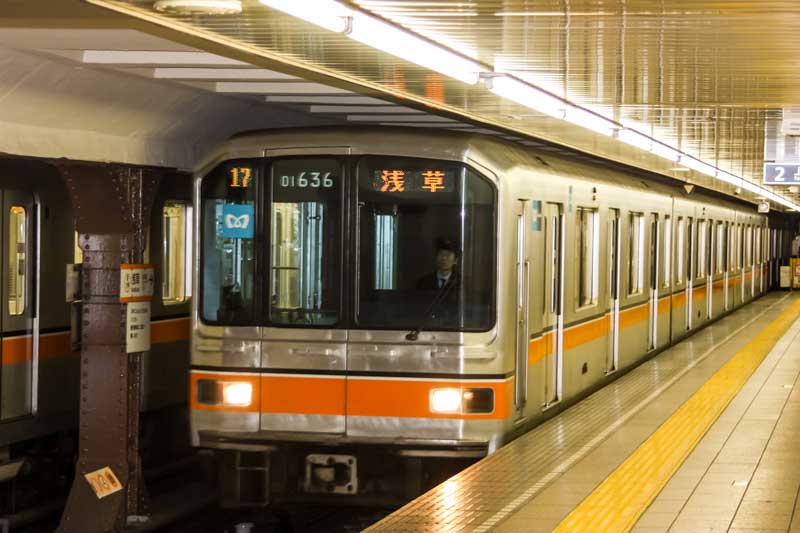
It is not exaggeration to say that Japan has one of the world’s greatest subway system.
There are two major brands of train cards: Suica and Pasmo. But they are only used for subways, trains and bus routes in Tokyo (with the exception of JR Shinkansen and limited express trains).
Most Tokyo subway tickets and tickets can be purchased from vending machines with an English language option. Ticket machines are located at each subway station. You can choose the amount of money deposited depending on the time and your plan in Tokyo.

You can top-up your prepaid card or buy ticket with these machines.
1.4.2. JR Train
Besides subway, JR train is also a good option to travel to some tourist attractions in Tokyo. There are 2 main lines which are JR Yamanote Line and JR Chuo Line.
To ride JR trains in Tokyo, you can buy tickets, use a JR Pass or use a repaid card like Suica or Pasmo.

1.5. Bike
If you don’t need to go far, consider renting a bike. You can enjoy the view along the way to the sights, and it will be a great experience during pleasant weather seasons like spring and autumn. You can also easily stop wherever you want and experience Japan like a local person.

Riding a bike is a great way to enjoy nice weather in Tokyo
2. Passes and Prepaid transportation cards
2.1. Suica card
Suica (Super Urban Intelligent Card) is a prepaid card issued by JR East. You can buy it with a ticket vending machine or at the travel service centers at the airport or JR train stations with a minimum price of 1000 yen of which 500 yen is the deposit fee.
When you fly back to your country, you can return Suica card at JR East stations and get refund. The deposit of 500 yen is returned along with the remaining amount after deducting a returning charge of 200 yen. For example: If your card balance is 1000 yen, then you will get a refund of: 1000 – 220 + 500 = 1280 yen,
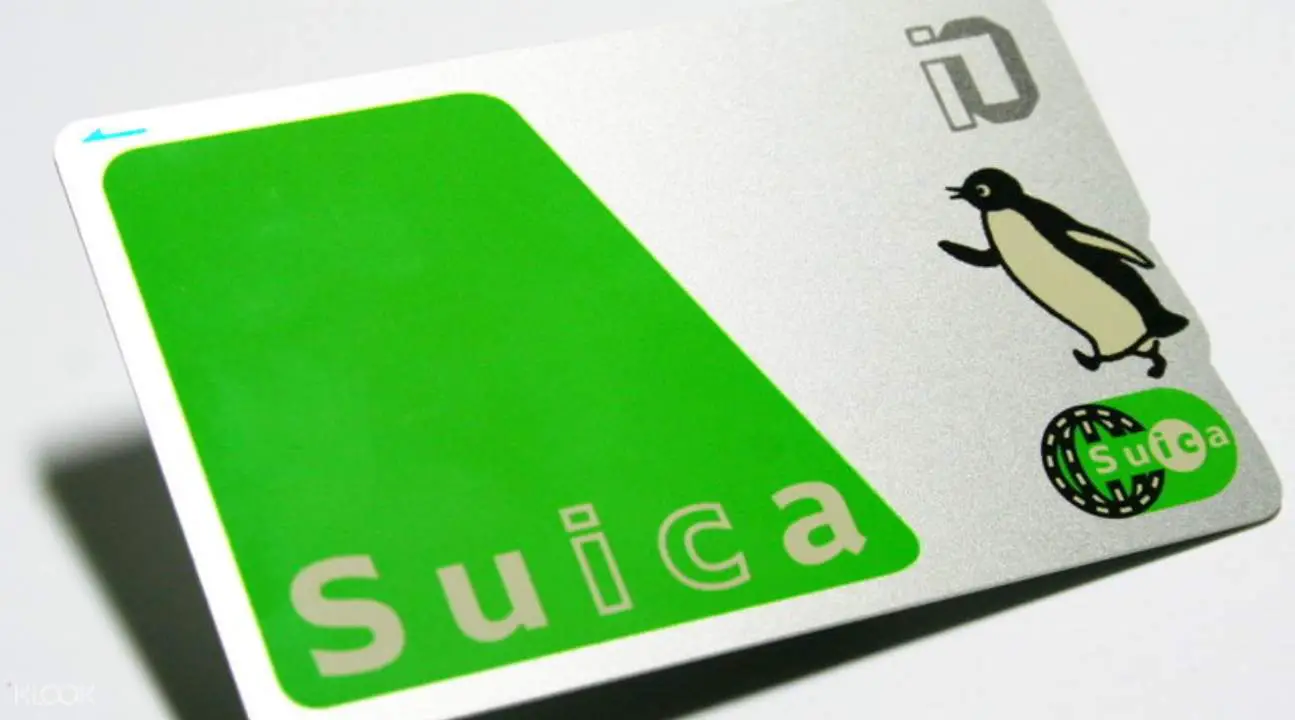
Penguin is the cosmos of Suica
2.2. Pasmo card
Pasmo is also a prepaid card that is issued by Tokyo Metro and other transport companies in Tokyo. It’s mascot is a pink robot. Similar to Suica card, Pasmo can be used on buses, subways, trains and in many convenience stores. A great thing is that these two cards are interchangeable so you only need to buy one of them.
You can buy Pasmo at subway stations in Tokyo or at Narita/Haneda airport train stations.
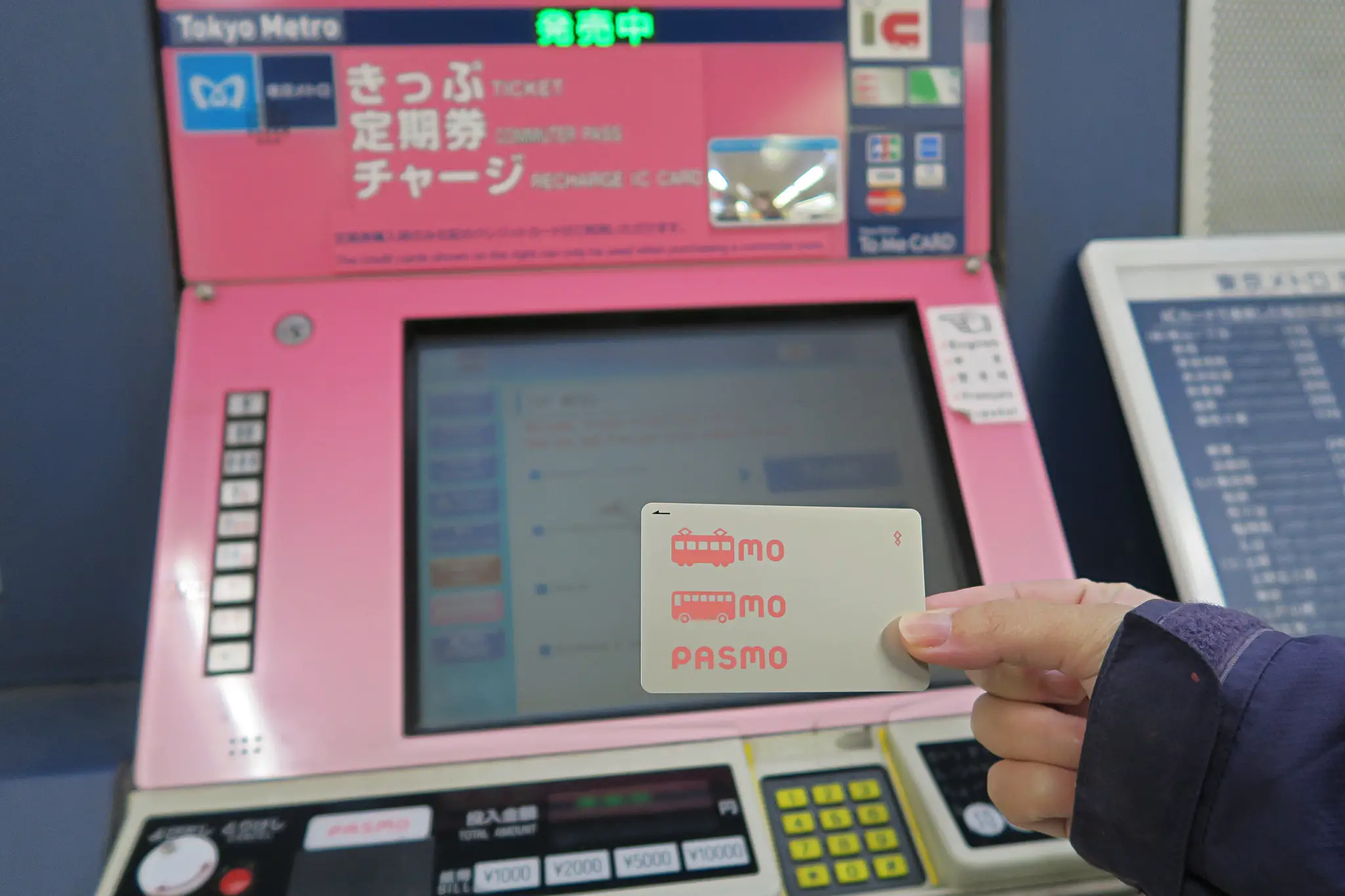
Pasmo vending machine also has a light pink color.
2.3. JR Pass
JR Pass is a great option for tourists. You can even buy it before arriving Japan. However please keep in mind that JR Pass is only valid on JR Trains, not on the subways and it is more suitable when you travel to multiple cities in Japan.
There are two types of JR Pass: Green Cars and Standard Cars. Each type has 3 separated categories which are 7 days, 14 days or 21 days. Below is price details of each Pass (as of Apr 2020)
| Duration | Adult
(Green) |
Child
(Green) |
Adult
(Standard) |
Child
(Standard) |
| 7-day | 44,810 YEN | 22,400 YEN | 33,610 YEN | 16,800 YEN |
| 14-day | 72,310 YEN | 36,150 YEN | 52,960 YEN | 26,480 YEN |
| 21-day | 91,670 YEN | 45,830 YEN | 66,200 YEN | 33,100 YEN |
You can have have more information at the link below:
3. Do And Don’t In Japanese Public Transportation
Public transportation in Japan has many traveling etiquettes. If you do not want to receive judgment looks from other people or even get kicked out of the trains, please pay attention to these rules below:
- Do not cut in line while waiting for your train
- Respect privacy and silent: Do not talking over the phone or chatting loudly
- Keep everything clean: Do not drink or eat
- Do not seat on priority seats
Find out more do and don’t in the link below:
4. FAQ – Getting Around In Tokyo
4.1. What Is The Best Way To Get Around In Tokyo?
Each means of transportation has its own benefits. However, we believe subways and trains are the most comfortable, convenient and economical transportation to get around in Tokyo.
4.2. What Is The Main Transportation In Tokyo?
Obviously, subways and trains are the correct answers. You should avoid using them at rush hours as there is a huge number of people at train stations during that time.

4.3. How Much Does Transportation Cost In Tokyo?
It obviously depends on your time and your plan in Japan. The more you travel, the more you spend. So there is no exact estimation for this question. However, normally it might take around 500 – 800 USD for 2 weeks in Japan.
4.4. Is Tokyo Metro Covered By JR Pass?
The answer is no. JR Pass is valid only on JR trains and the Tokyo Monorail

Conclusion
So that’s the end of our location guide today. Hopefully, we have provided you enough information on getting around in Tokyo. If you have any query, please share with us in the comment section below.



